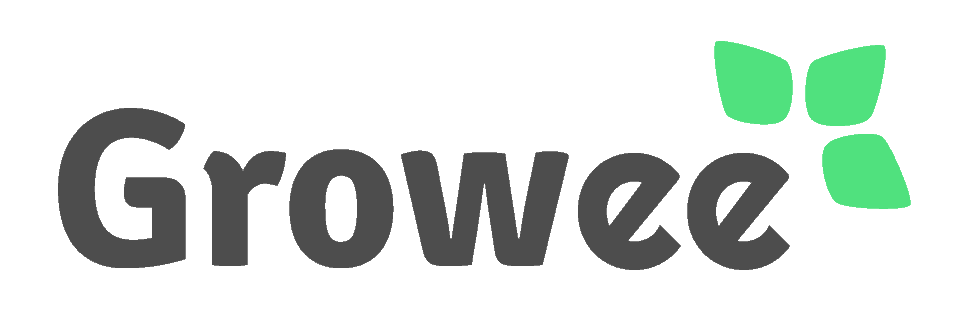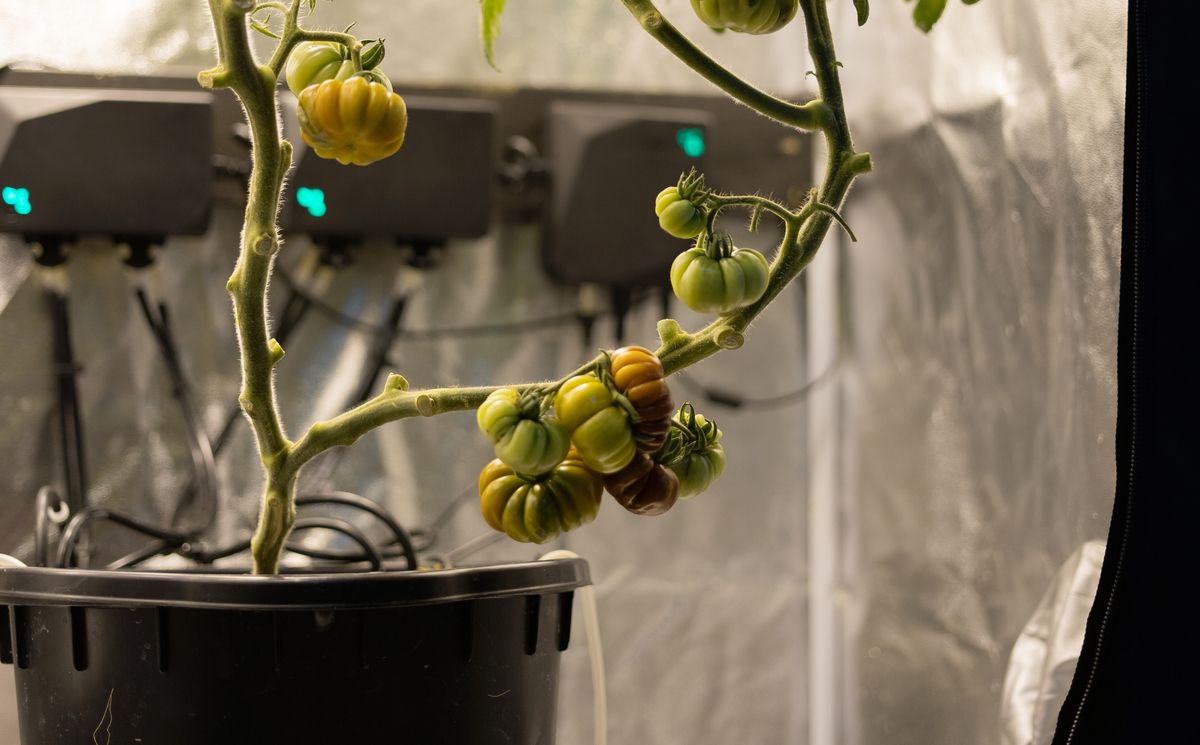Among the most commonly asked questions when cultivating in a DWC hydroponic system is: When should one replace the water? The traditional feeding charts often suggest a biweekly water replacement schedule. However, our experience has shown that this is not a one-size-fits-all solution. Instead, the timeline for water replacement can depend heavily on several factors, including the type of plant, its growth stage, and the quality of the water used in the system.
Why do we need to replace the water in our DWC system?
The most common reasons for water replacement in Deep Water Culture (DWC) hydroponics systems are:
- Nutrient Availability: As plants grow, they absorb nutrients from the water. Over time, the water’s nutrient concentration decreases, which can limit plant growth. Replacing the water ensures that your plants consistently have access to the necessary nutrients.
- Waste Removal: Plants also excrete waste products into the water. These waste products can build up and harm your plants if not removed. Regular water replacement helps to eliminate these harmful substances.
See How Growee Can Save You Time By Automating Your Plants Feeding
Water pH – Automated pH Up and Down Control
Nutrients Mixing – Automated Nutrient Dosing with Target EC / PPM Control.
Control From Anywhere – WiFi Connection and mobile App
Additional Reasons to Consider Water Replacement – Tap Water Quality and Chloride Concentration
Another critical factor influencing water replacement frequency is the water quality used. Water with high Electrical Conductivity (EC), and exceptionally high Chloride (Cl-), can pose potential risks to plant health. High levels of Chlorides can cause toxicity symptoms such as leaf burn, necrosis, or even wilting.
The toxicity threshold for chloride varies widely among plant species, with some plants being more tolerant than others. However, as a general guideline, chloride concentrations above 70-100 ppm (parts per million) in the nutrient solution can start to cause toxicity symptoms in sensitive plants. These symptoms can include leaf burn, leaf drop, wilting, and in severe cases, plant death.
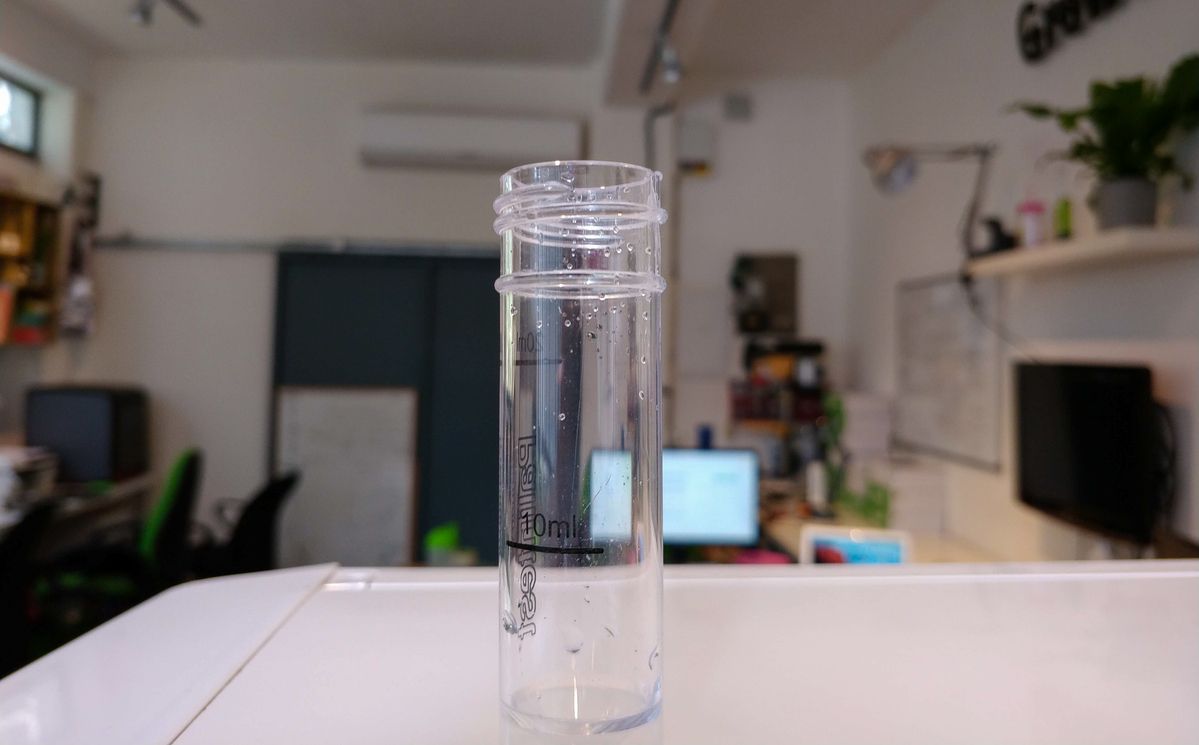
How Can I Determine the Chloride Concentration in My Tap Water and Its Suitability for DWC Hydroponic Growing
The basic option is to examine the natural EC levels of your tap water. High EC levels usually indicate a high concentration of dissolved salts, which could include a variety of ions such as calcium, magnesium, sodium, bicarbonates, sulfates, and chloride.
Chloride ions contribute to the overall EC of the water. If your tap water has high EC levels, it’s possible that some of this could be due to high chloride concentrations. An EC above 0.8 mS/cm is usually considered high.
Another option to determine your area’s EC level and overall water quality is to visit your local water service provider’s website and access their water quality report. Often generated annually, these reports contain detailed information about the water’s chemical makeup, including various ion concentrations and EC levels. This can give you a good starting point in understanding the suitability of your tap water for DWC hydroponic growing.
Therefore, if you’re using water with high EC or Chloride levels, replace or dilute the nutrient solution more frequently, possibly with Reverse Osmosis (RO) water, to prevent the Chloride concentration from reaching harmful levels. Regular testing of your water’s EC can guide you in this regard.
Is Following the Feeding Chart Water Replacement Guideline Crucial for My DWC Hydroponic System?
While following the feeding chart water replacement guideline is generally a good practice for DWC hydroponic systems, it can be beneficial to consider other factors. For example, the stage of plant growth and its corresponding water consumption can influence the ideal timing for water replacement.
Water Consumption in Different Growth Stages in DWC System
During the seedling or early growth stages, a plant’s water consumption is minimal, often less than half a liter per day. Consequently, the nutrient solution in the DWC reservoir remains largely untouched, only requiring replacement once every few weeks. As the plant matures and enters the blooming phase, the scenario dramatically changes. For instance, a mature cannabis plant in its late bloom stage can consume an astonishing 2-3 gallons of nutrient solution per day. In such cases, the water may need to be replaced or replenished more frequently to maintain the required nutrient concentration and pH balance.
Most of the Water in a DWC Hydroponic System is Absorbed by the Plant
DWC hydroponic systems operate uniquely compared to traditional soil-based cultivation. In these systems, the plant’s roots are submerged in a nutrient-rich solution, allowing them constant access to water and essential nutrients. However, this does not mean that the water level in the DWC system remains static. It fluctuates as the plants consume water and nutrients.
Contrary to what one might expect, in a DWC system, most of the water loss is due to the plant’s consumption rather than evaporation. This is because DWC systems are typically closed environments, meaning there’s limited exposure to outside air, thus significantly reducing the rate of evaporation. Therefore, when you notice the water level dropping in your DWC system, it’s primarily because your plants are actively absorbing water and nutrients.
As the plants grow and mature, they will naturally consume more water. The water usage rate also tends to be higher during the blooming or fruiting stage when the plant’s nutrient and water requirements increase. This dynamic underscores the importance of regularly monitoring the water levels in your DWC system and understanding when and why water replacement is needed.
Our DWC Cucumber Grow experiment: Tracking Water Use at Each Stage

To further illustrate water usage and replacement dynamics in DWC systems, let’s delve into an experiment conducted with cucumber plants grown in 8-gallon DWC buckets under fluorescent light. This experiment monitored the plants’ water consumption at different growth stages, providing valuable insights into the actual water needs versus the general recommendation of replacing all water every ten days.
This graph shows the amount of water consumed by the plant each week in a hydroponic system:
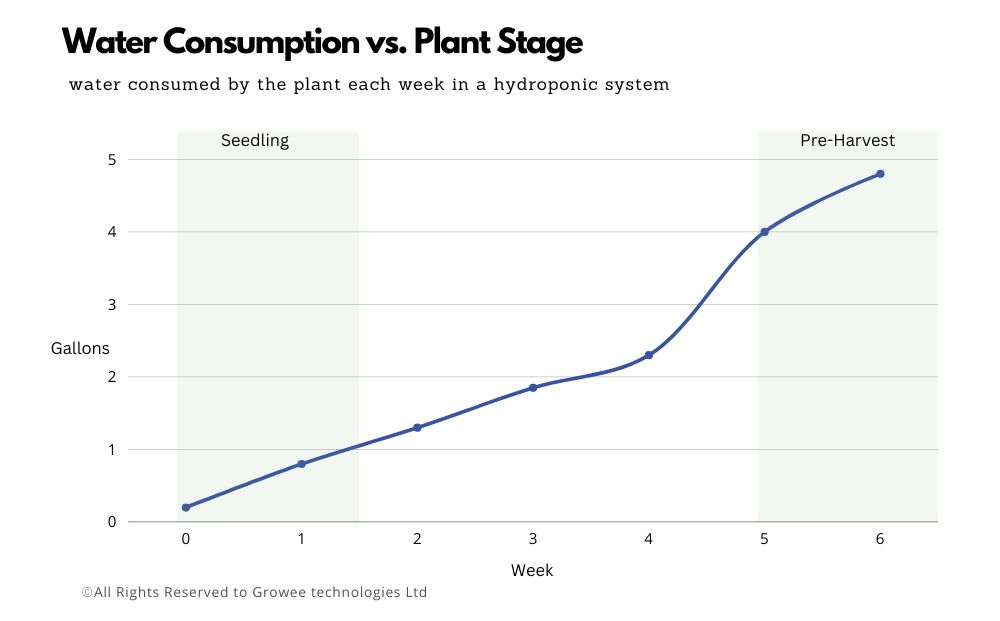
This amounts to a total water usage of approximately 16 gallons over the six weeks of the experiment.
Contrast this to the standard recommendation from feeding charts, which advices replacing the water solution every week. In an 8-gallon DWC system, this would replace 48 gallons of water over the same six-week period.

The results of this experiment reveal that monitoring and replacing water based on the plant’s growth stage and actual water consumption saved approximately 9.9 gallons of water over six weeks, compared to following a rigid seven-day water replacement schedule. This amounts to almost a 66% reduction in water use!
This experiment underscores the significance of understanding the specific water needs of your plants at different growth stages. Adopting a flexible approach to water replacement, guided by close observation of your plants and their environment, can lead to more efficient water use and potentially better plant health and yields in DWC hydroponic systems. Remember, the beauty of DWC systems lies in their adaptability to the grower’s observations and experiences and the potential for continuous learning and improvement.
DWC Water Replacement: Full Replacement vs. Top-Off Methods
In Deep Water Culture (DWC), there are two principal methods for managing water: full replacement and top-off. Each method has its own advantages and considerations that growers need to understand.
In the full water replacement method, the entire nutrient solution is replaced with fresh water. The grower needs to balance the pH and add nutrients to the new water. One downside to this method is that the old feeding solution, which might still contain useful nutrients for the plants, is discarded. This means that some of the nutrient potential is wasted.
On the other hand, the top-off method involves adding fresh water to compensate for the water that was consumed by the plants. The fresh water dilutes the existing nutrient solution, so the grower needs to adjust the pH and EC (Electrical Conductivity) of the water accordingly. While this method is more water- and nutrient-efficient – as seen in our cucumber experiment – it does require more time and careful management to maintain the balance of the feeding solution.
Automating DWC with Growee: Save Time, Optimize Results
Growee’s hydroponics automation technology is a game-changer in DWC hydroponics, effectively making a choice between complete replacement and top-off methods a matter of preference rather than a chore. By automating the pH and EC dosing, growers can save time and resources and ensure optimal growing conditions for their plants.
Growee’s automated system handles the complex work, keeping the right balance for your plants to thrive. Consequently, you’ll achieve the best possible results from your DWC system, regardless of your chosen water management method.
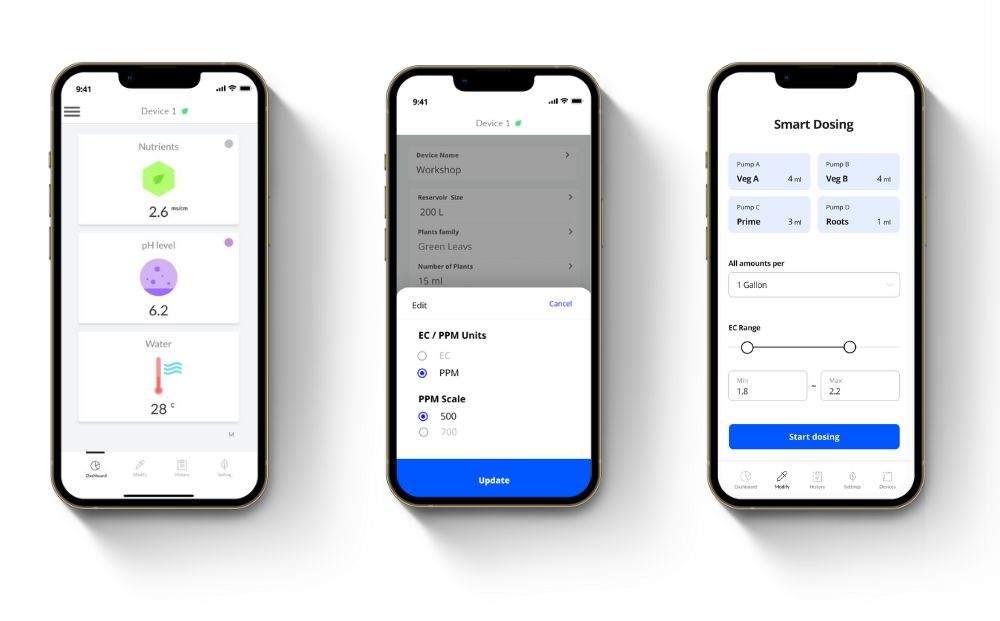
Your choice between complete replacement and top-off methods can now truly depend on your resources, the specific needs of your plants, and your personal preference as a grower. You no longer need to consider the time and effort required to balance the feeding solution manually.
Ultimately, DWC hydroponics is about finding the best method for your situation. With the proper knowledge and tools like Growee, you can turn any form into a successful strategy, leading to robust and rewarding harvests. No matter what you choose, remember that the journey is as important as the destination. Happy growing!
FAQ
When should I replace the water in my DWC hydroponic system?
The timing for water replacement depends on factors such as plant type, growth stage, and water quality. It’s not a one-size-fits-all solution, but a biweekly schedule is commonly suggested.
Why is water replacement necessary in DWC systems?
Water replacement ensures consistent nutrient availability for plants as they absorb nutrients from the water. It also helps remove waste products that can harm plants if left unchecked.
How does tap water quality affect water replacement frequency?
High levels of chloride in tap water can be harmful to plants. If your tap water has high electrical conductivity (EC) or chloride levels, it’s advisable to replace or dilute the nutrient solution more frequently, possibly with reverse osmosis (RO) water.
How can I determine the chloride concentration in my tap water for DWC hydroponics?
You can examine the natural EC levels of your tap water or access your local water service provider’s water quality report. High EC levels indicate a high concentration of dissolved salts, including chloride ions.
Is it crucial to follow the feeding chart water replacement guideline?
While following the feeding chart is generally recommended, other factors like plant growth stage and water consumption should also be considered. Water replacement timing can vary based on these factors.
How does water consumption change during different growth stages in DWC systems?
In early growth stages, water consumption is minimal, but it increases significantly during the blooming phase. Mature plants can consume 2-3 gallons of nutrient solution per day, requiring more frequent water replacement.
What causes water level fluctuations in a DWC hydroponic system?
In DWC systems, the majority of water loss occurs due to plant consumption rather than evaporation. Constant access to water and nutrients allows plants to absorb water, leading to fluctuations in water levels.
What insights were gained from the DWC cucumber grow experiment regarding water usage?
The experiment showed that monitoring water consumption based on growth stages saved approximately 9.9 gallons of water over six weeks compared to a rigid weekly replacement schedule, reducing water use by almost 66%.
What are the two methods for managing water in DWC systems?
The two methods are full replacement and top-off. Full replacement involves discarding the entire nutrient solution, while top-off involves adding fresh water to compensate for water consumed by the plants.
How does automation technology, like Growee, simplify water management in DWC hydroponics?
Growee’s automation technology automates pH and EC dosing, saving time and resources. It allows growers to choose between full replacement and top-off methods based on preference and plant needs, ensuring optimal growing conditions.
